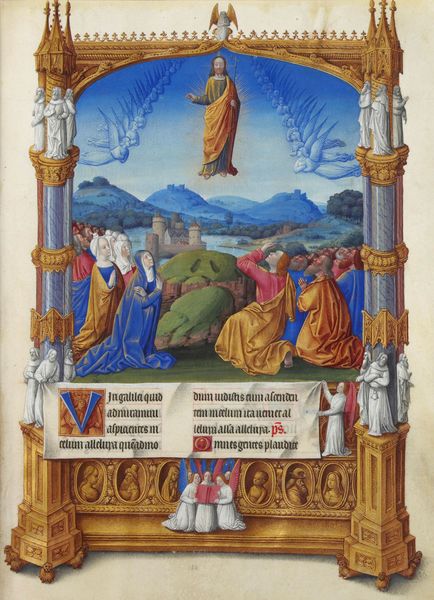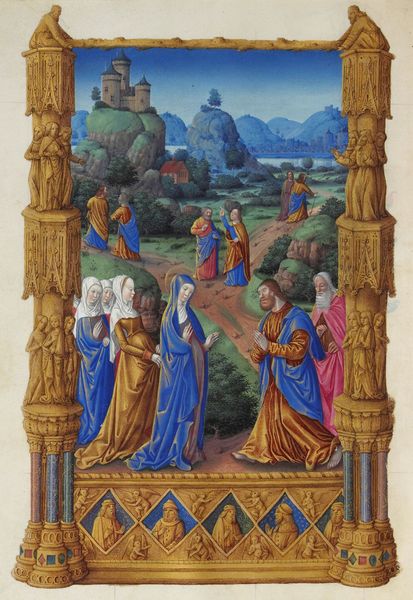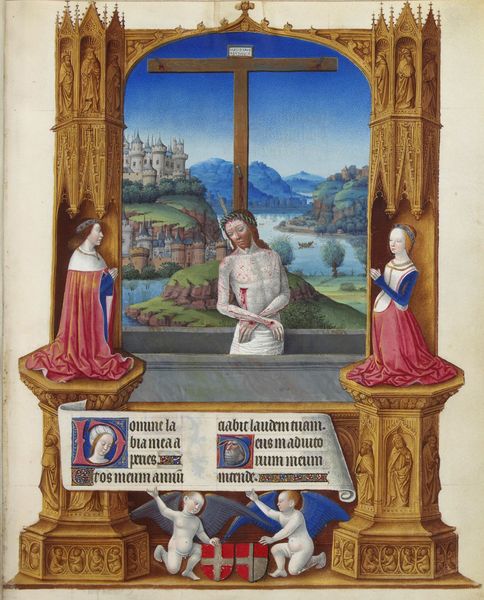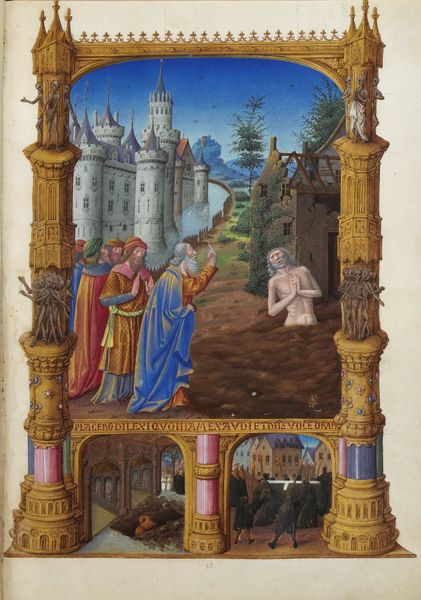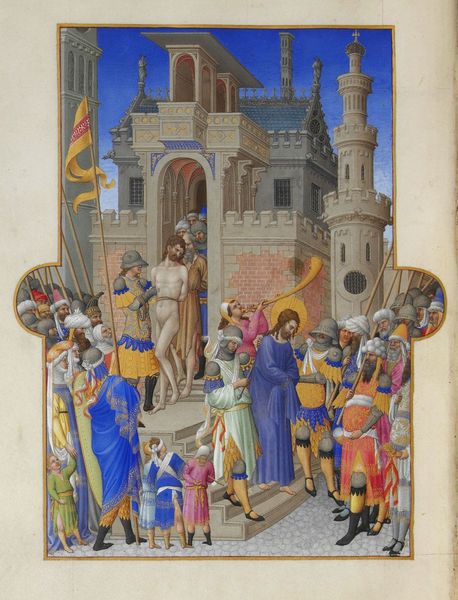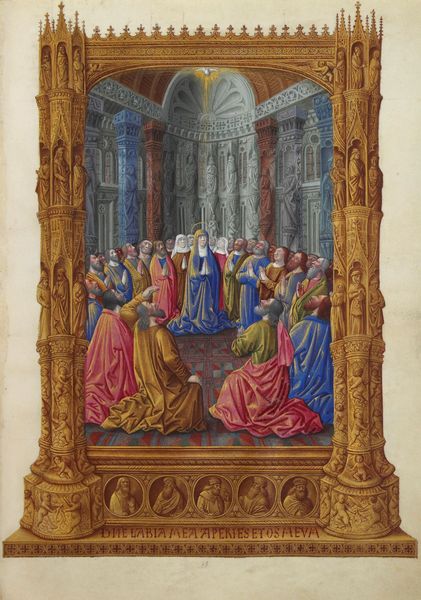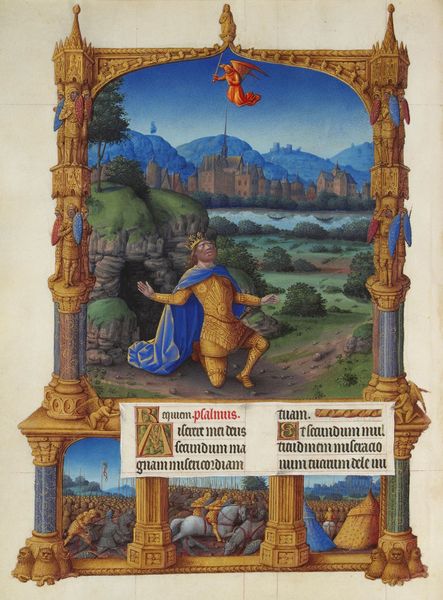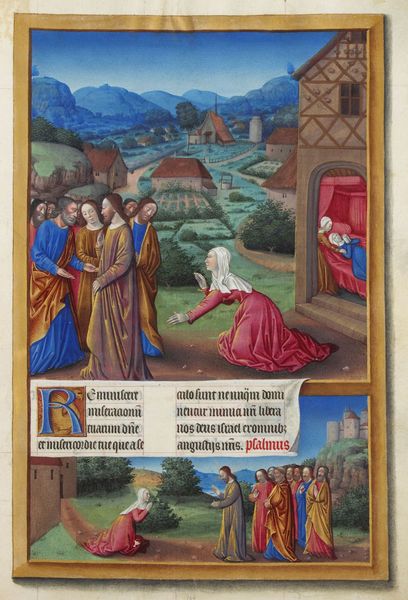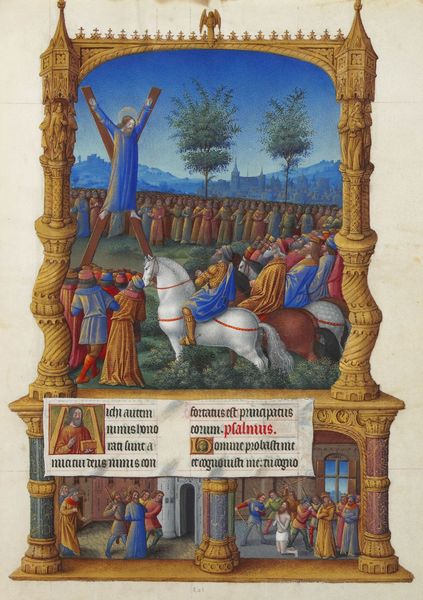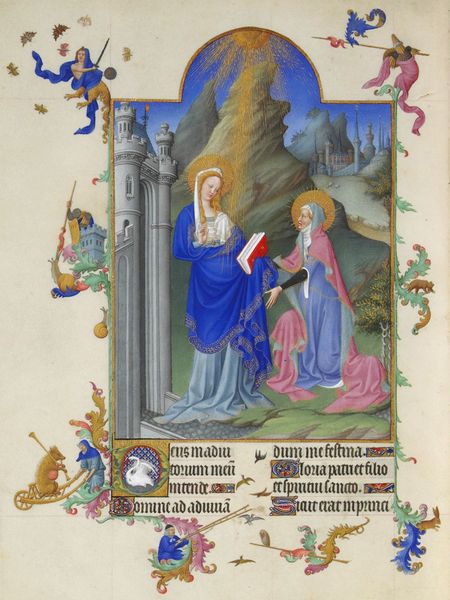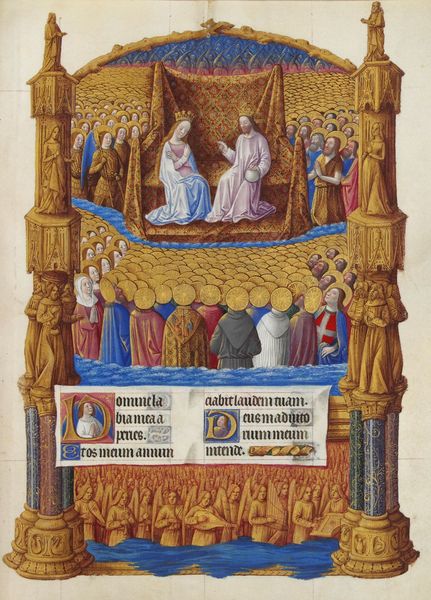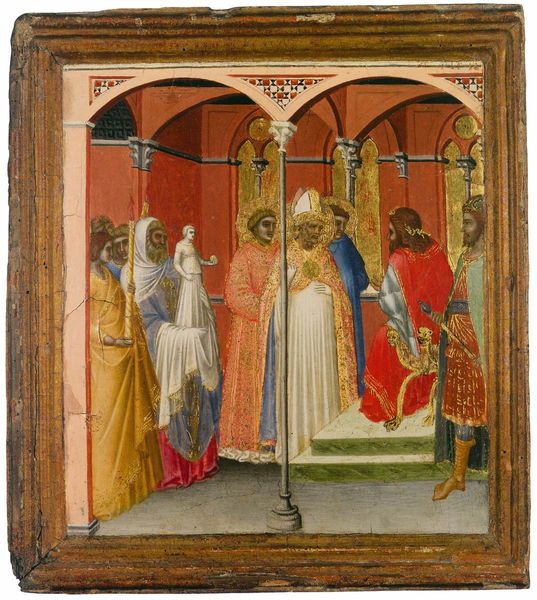
tempera, painting
#
portrait
#
medieval
#
narrative-art
#
tempera
#
painting
#
landscape
#
figuration
#
oil painting
#
group-portraits
#
watercolour illustration
#
history-painting
#
international-gothic
#
miniature
#
watercolor
Copyright: Public domain
Curator: Look at this miniature painting titled "The Revealing of the True Cross," created by the Limbourg brothers. Notice the incredible detail captured with tempera. What's your immediate impression? Editor: A scene of profound emotional intensity. The composition is so dynamic, drawing the eye to the foreground, with that figure collapsing in what seems like a moment of ecstatic revelation. The overall mood feels like a pivotal historical drama, set against an idyllic landscape, oddly juxtaposed. Curator: Indeed, the Limbourg brothers, masters of the International Gothic style, worked at a time where courtly art served to legitimize power through the commission of elaborate illuminated manuscripts and devotional art, often for members of the aristocracy and clergy. This specific image depicts a narrative of miraculous discovery. Editor: The scroll held by putti adds to the theatricality. I'm drawn to the symbol of the cross itself; what it represented then—suffering, faith, redemption—and how those layers of meaning would be instantly recognizable, shaping responses in the viewer of that era. But more subtly, this episode became pivotal in the cult of relics that exploded through the Late Middle Ages. Curator: Precisely! The social and political weight of possessing such a relic cannot be overstated. Consider the economy that bloomed around sacred artifacts. Possession equated to legitimacy, prestige, and power, particularly for institutions like churches and ruling families. This illumination could act as propaganda through its connection of nobility and holiness. Editor: It is intriguing how the artist chose to set this scene outdoors. The inclusion of landscape elements provides a peaceful yet imposing setting that accentuates the extraordinary nature of what is taking place here in the foreground, between the historical setting and its symbolic representation. Curator: Yes, even seemingly incidental elements can be telling. The architectural structures like the castle in the background speaks to secular power, its proximity suggesting alignment with the Church’s authority, while the detailed costumes highlight the status of the individuals portrayed and by extension their cultural setting and position. Editor: When I look at the woman kneeling on the ground, enrobed in her immaculate garment, a sort of recognition passes through time. These artists seem to imbue in their characters such recognizably human responses to sublime moments. I'm really intrigued by that capacity across centuries, for visual language to retain the emotive charge. Curator: Seeing this artwork through the lens of cultural power structures really heightens my appreciation. It’s not just about biblical narrative; it's about constructing and reinforcing societal order. Editor: I concur; it’s a fascinating window into the cultural psychology of that period. Thank you, "The Revealing of the True Cross" for letting us explore a crucial time through a kaleidoscope of sacred objects and recognizable people.
Comments
No comments
Be the first to comment and join the conversation on the ultimate creative platform.
